UC Berkeley falcons Annie and Archie are missing. Is avian flu the cause?
Cal Falcons says it's likely, as the pair hasn't been seen in nearly two months, and the disease "is hitting peregrines very hard right now."
February 24, 2025
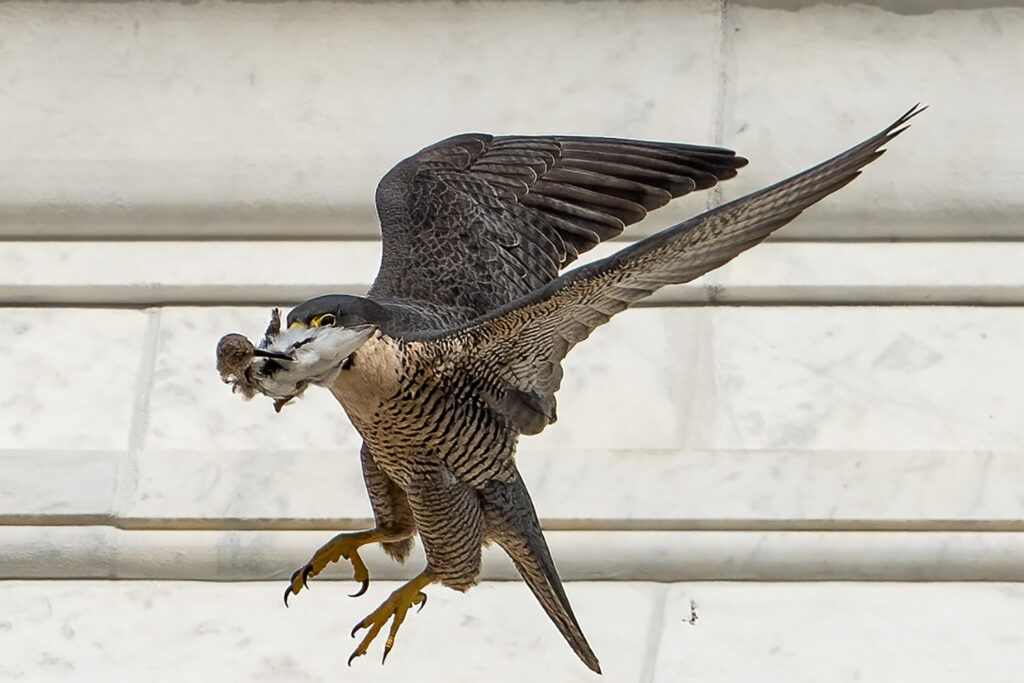
Bridget Ahern for UC Berkeley
As avian flu continues to kill birds worldwide, Cal Falcons reports today (Monday, Feb. 24) that UC Berkeley’s resident female falcon, Annie, and her latest mate, Archie, haven’t been seen on campus in nearly two months and that the highly contagious disease is the most likely reason why.
February typically is when Annie engages in pair bonding with her mate and readies the gravel nest box on the campus’s 307-foot-tall Campanile. She’s produced a new clutch of eggs for eight years straight, a rarity for a female peregrine, and raised 22 offspring.
But around the start of 2025, she and Archie disappeared from the skies over campus and also from the bell tower’s three 24/7 webcams, one of them focused on the nest.
“We can’t avoid their absence any longer, it’s just too glaring,” said Mary Malec, a Cal Falcons raptor expert. “We have to say what the possibilities are, and what’s most likely.”
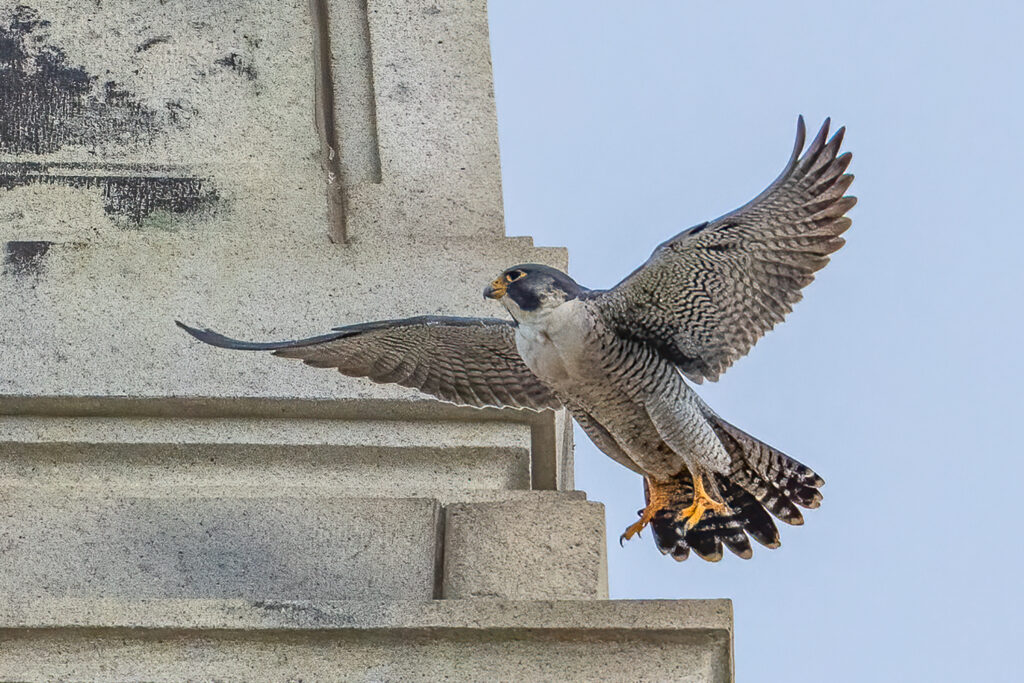
Bridget Ahern for UC Berkeley
Cal Falcons, a group of scientists and volunteers, has posted those likelihoods on its Instagram, Facebook and Bluesky channels, which have followers in 44 countries.
“First of all, we have the elephant in the room: highly pathogenic avian influenza (HPAI),” the post states. “This virulent and deadly disease is incredibly dangerous to many groups of birds, including shorebirds and raptors. In some species, and for some strains of the disease, mortality is over 90% for infected individuals.
“… It is hitting peregrines very hard right now, probably due, in part, to their habit of taking shorebirds and waterfowl, the latter of which tend to be carriers of HPAI.”
The post adds that in some parts of the peregrine’s range, nearly 50% of historic territories are unoccupied due to avian flu, and that case positivity rates are pushing 80%.
Last fall, an Audubon Magazine article reported a decline in peregrine falcon numbers “not seen since the DDT era” in the 1960s and ‘70s, when the raptors were near extinction due to widespread use of the pesticide.
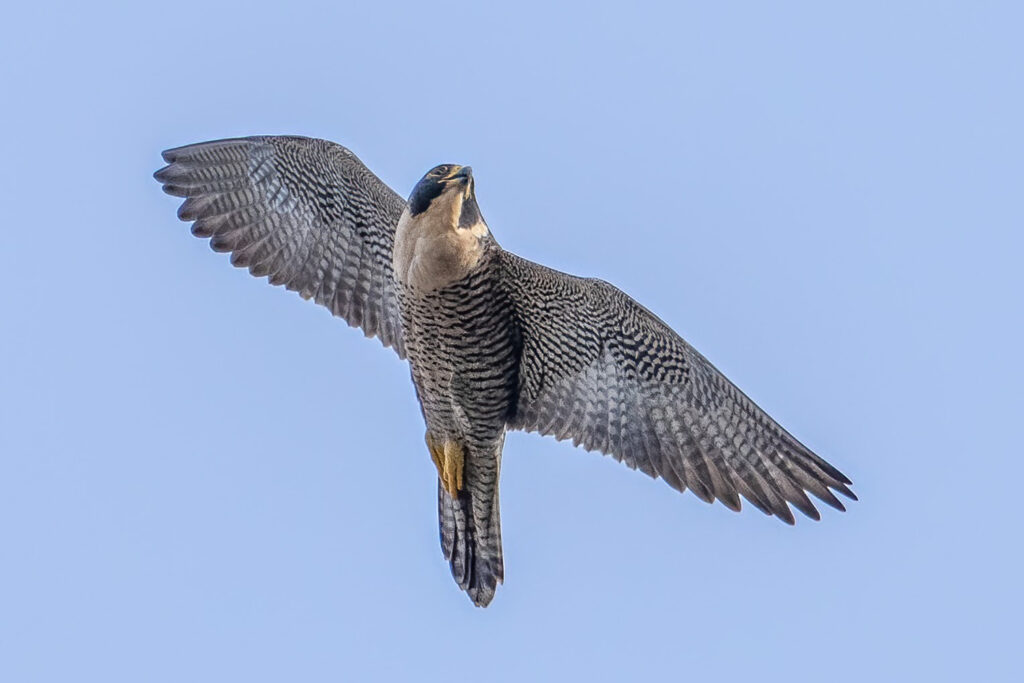
Bridget Ahern for UC Berkeley
At Berkeley, Cal Falcons members have looked in vain for evidence of a sick or dying falcon on the bell tower and at Annie and Archie’s other favorite local roosts. They’ve also been searching eBird reports and Instagram photos. Neither Annie nor Archie wears an ID band.
Bridget Ahern, a wildlife photographer who for years has chronicled the campus’s falcon family, said she last photographed Annie on Jan. 4, and that her most recent photo of Archie is from late December. She saw the pair mating around that time.
On campus recently, Ahern left her camera behind to focus on searching for the birds. “I was walking with my binoculars,” she said, “and saying, ‘Come on, Annie!’”
Floaters are absent, too
In the Bay Area, Cal Falcons reports that 40% of peregrine territories currently are unoccupied, and that aside from a few very brief sightings of a couple other falcons on campus, “it has been exceptionally quiet this winter.”
And that’s bad news.
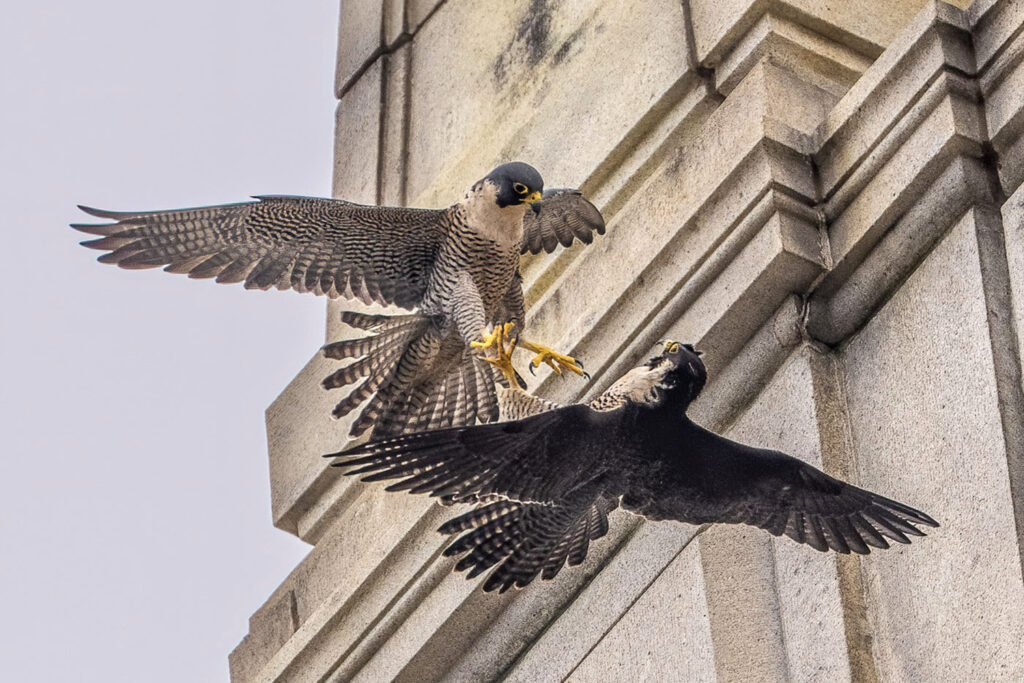
Bridget Ahern for UC Berkeley
“Aside from the fact that it looks like we’ve lost Annie and Archie, the most alarming thing is that we don’t have replacement falcons,” said Malec. “We’ve always had floaters around, and floaters are absolutely necessary when birds age out or get sick or injured. Without them, there is no one to breed with.”
Floaters have no fixed territory and fly within a region in search of a nesting area or mate.
“Floaters are a sign of a healthy population and ecosystem,” the Cal Falcons post says. “The decrease in the number of floaters is also an indication that HPAI is affecting not just breeding pairs, but birds looking for their own territories, as well.”
At 10 Bay Area peregrine falcon sites that Malec recently monitored, there were falcons at only three. Two sites had a pair of falcons, she said, the third had a single bird. The other seven sites were empty, but “it is still early in the season,” she added, “and there is time for pairs to form and nesting to occur.”
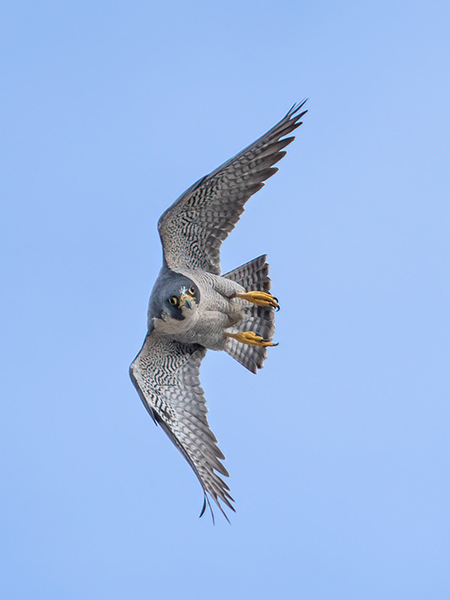
Bridget Ahern for UC Berkeley
As for whether Annie and Archie might have moved to another territory, Malec said that raptors “show such strong fealty for their territories” that it’s rare for them to leave a home they’ve established.
Several years ago, there were regular sightings of floaters looking to take over the territory of the Berkeley falcons, who often had to aggressively protect it.
In February 2022, for example, when Annie vanished for more than a week during nesting season, several unattached female falcons circled the tower, eyeing her home and longtime mate, Grinnell.
The floaters left after Annie’s unexpected return to the Campanile on March 1, but a female intruder threatened the nest several times after that, and Grinnell defended his home from a female early on March 31. Later that day, he was found dead in downtown Berkeley.
Remarkably, Malec added, “Grinnell was replaced by Alden in just seven hours — seven.” She was referring to the falcon who speedily took Grinnell’s spot at the bell tower and helped Annie incubate the eggs in the nest. He disappeared in late 2022.
‘We’re all clinging to hope’
Peterson said there is a slim possibility that Annie and Archie are on an extended hunting trip, as there are “huge swaths of unoccupied hunting grounds out there due to HPAI.”
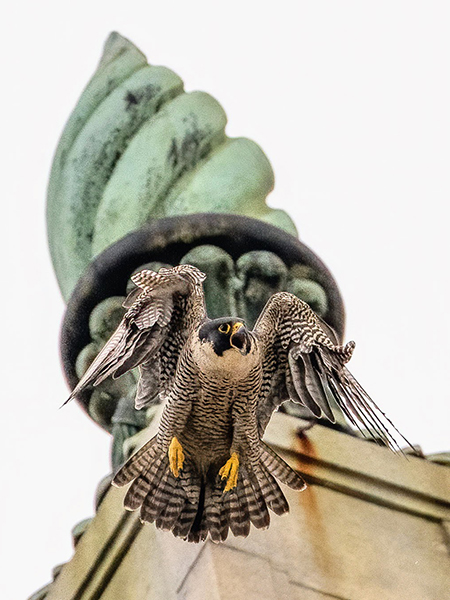
Bridget Ahern for UC Berkeley
Or it could be that predators, like great horned owls or eagles, harmed the pair, he added, or that some other dynamic is occurring “that we don’t understand.”
If avian flu is the culprit, it’s not the first time the disease may have struck Berkeley’s falcon family. In winter 2024, Annie’s then-mate, Lou, disappeared, and Cal Falcons suspected HPAI. Archie took Lou’s place.
And it’s strongly assumed that one of Annie and Grinnell’s offspring, Sequoia, died of HPAI, since it was confirmed that his mate, Shasta, contracted it in late March 2023. The two lived on San Jose City Hall.
If Annie and Archie don’t return, said Malec, there’s always hope that the nest box atop the tower will be inhabited by falcons again.
“It’s a really good place for peregrines,” she said, “They will know it’s been a successful nest site by the whitewash (excrement) on the tower.”
But Peterson said it could take some time for younger falcons to fill open territories after the HPAI outbreak wanes.
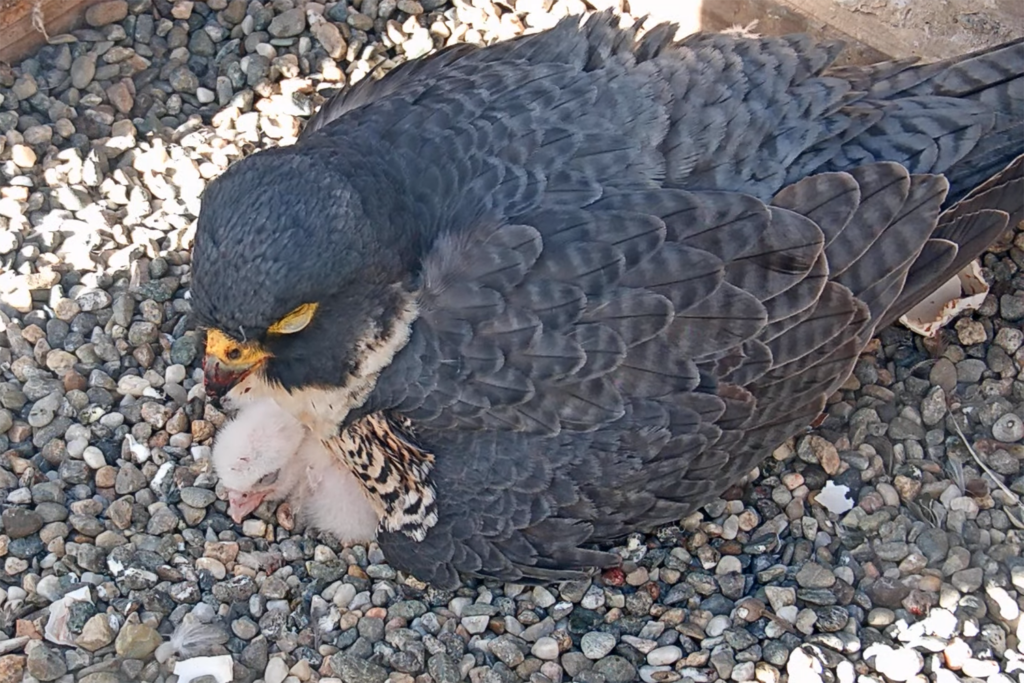
Cal Falcons
Unless new raptors claim the tower, Cal Falcons is not giving up hope that the pair will return there, where they could successfully nest as late as May and raise chicks.
“Studying biology, you learn over and over again that totally unexpected things can happen,” said Peterson. “There’s so much random change.”
Annie, the fierce matriarch and a campus mainstay since late 2016, “could still show up, she still could,” he continued. “I don’t think it’s likely, but we’ve written her obit before.
“We’re all clinging to hope, even if it’s a meager amount.”
For now, photographer Ahern has decided how to answer people who approach her on campus, wondering where the falcons are.
“If people ask me,” she said, “I say I haven’t seen them.”